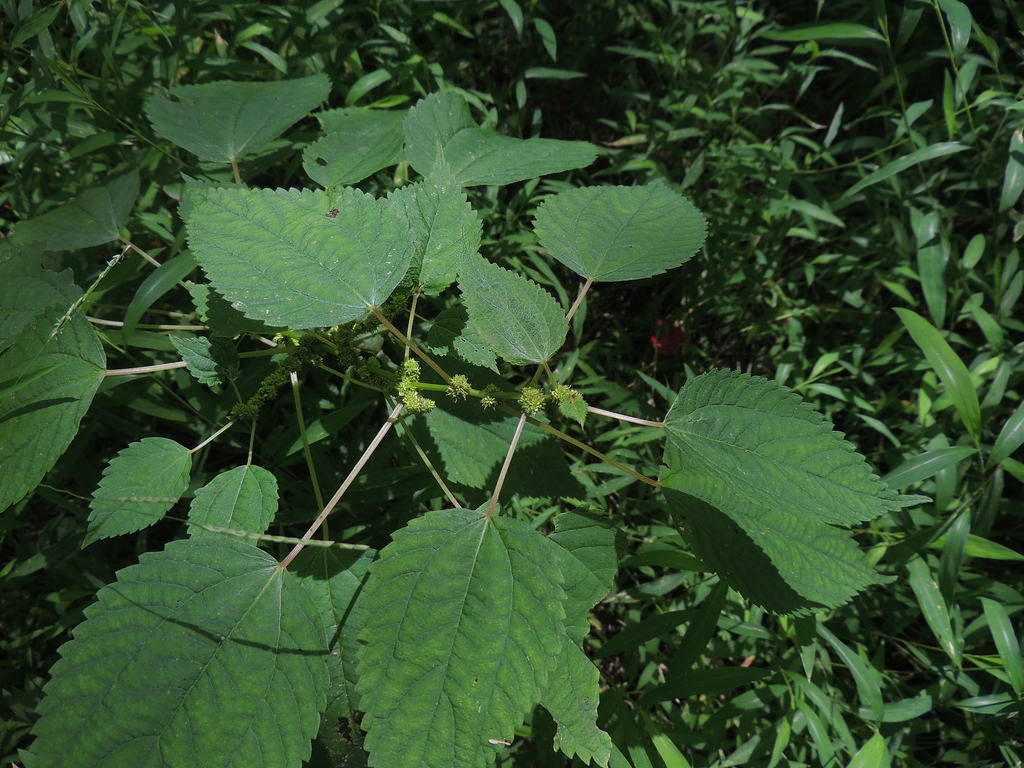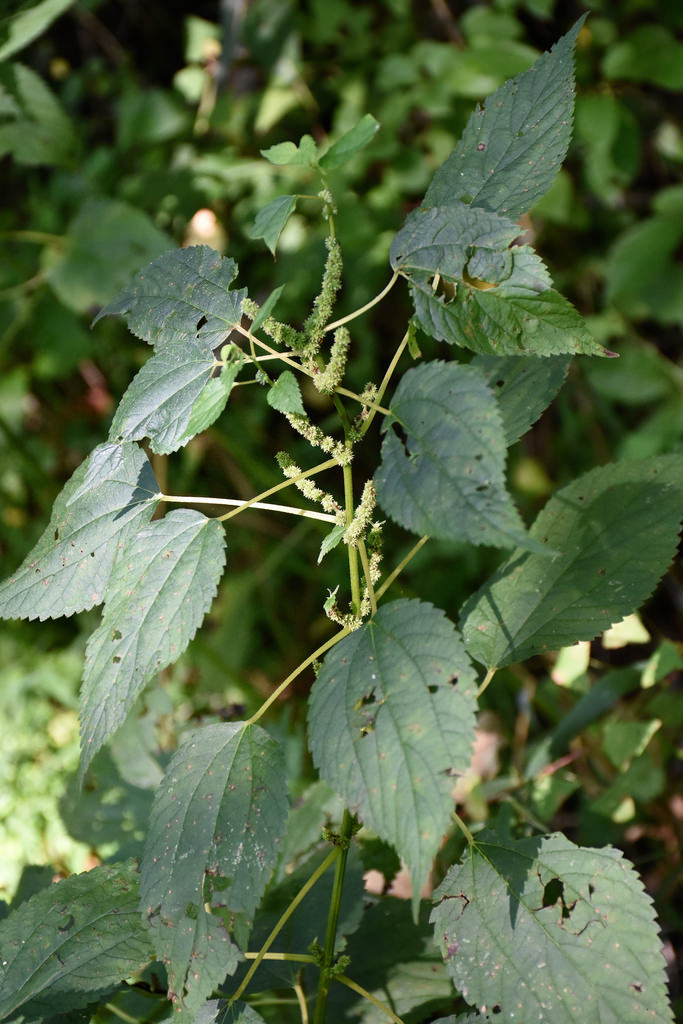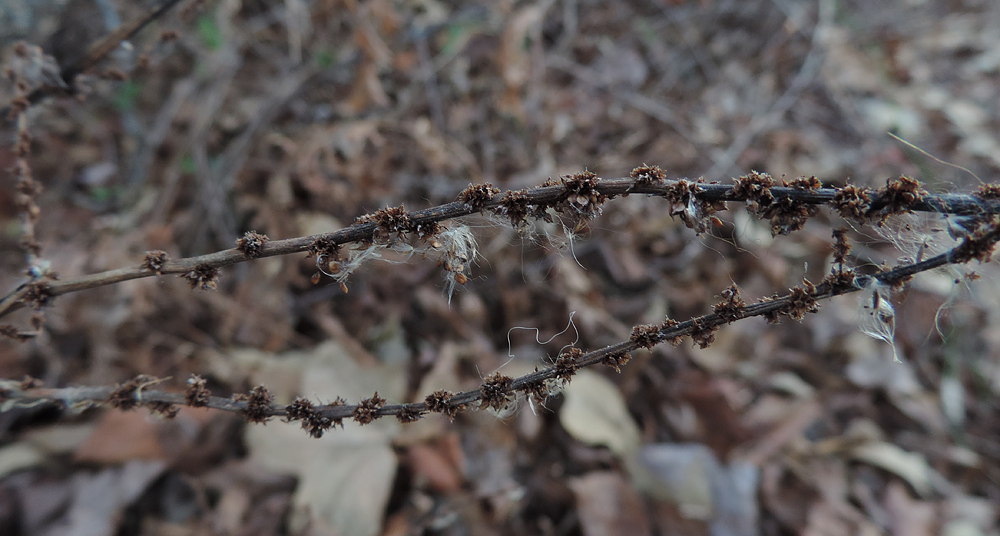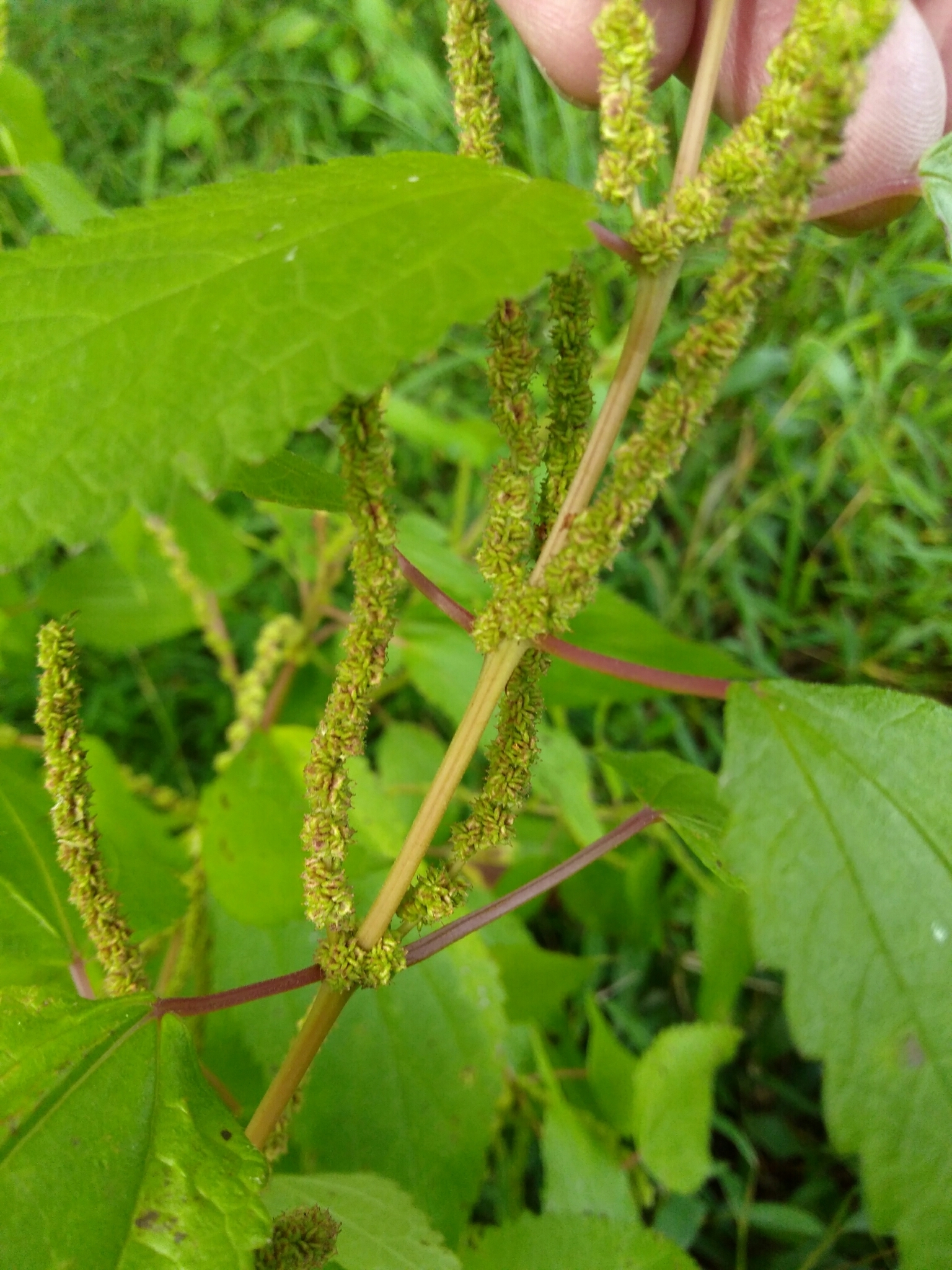Map Snapshot

























602 Records
Status
"Florida to Texas, north to Maine, southern Quebec, southern Ontario and Minnesota; West Indies" (Reed, 1964).
Seasonality Snapshot
Source: Wikipedia
| False nettle | |
|---|---|

| |
| Scientific classification | |
| Kingdom: | Plantae |
| Clade: | Tracheophytes |
| Clade: | Angiosperms |
| Clade: | Eudicots |
| Clade: | Rosids |
| Order: | Rosales |
| Family: | Urticaceae |
| Genus: | Boehmeria |
| Species: | B. cylindrica
|
| Binomial name | |
| Boehmeria cylindrica | |
| Synonyms[1] | |
Boehmeria cylindrica, with common names false nettle and bog hemp,[2] is an herb in the family Urticaceae. It is widespread in eastern North America and the Great Plains from New Brunswick to Florida to Texas to Nebraska, with scattered reports of isolated populations in New Mexico, Arizona, and Utah, as well as in Bermuda, Mexico, Central America, the West Indies, and South America.[1][3]
The plant is an herb or subshrub up to 160 cm (63 in) tall, usually monoecious, but rarely dioecious. Leaves are usually opposite, though occasionally alternate, and the inflorescence is a spike with a tuft of small bracts at the apex.[1][3]
Description
[edit]B. cylindrica is a deciduous and occasionally dioecious growing plant. The plant grows to be 0.5 to 1.0 m (1 ft 8 in to 3 ft 3 in) in height with opposite leaf arrangement. Spike-like hairs are in the leaf axils. Leaves are ovate in shape and 6–8 cm (2.4–3.1 in) in length and 3–4 cm (1.2–1.6 in) in width. Flowers are green or greenish white in color and the flowers appear from the axils of the upper leaves. Small, oval-shaped seeds are covered in small, hook-like hairs. Once mature, the seeds are dark brown.[4] The inflorescences resemble spikes and can be from 1–3 cm (0.39–1.18 in) in length. Male and female flowers typically grow on separate plants. Male flowers are more prominently distributed among the spikes in bunches. The female flowers are less continuously distributed along the spikes.[5]
Taxonomy
[edit]Some of the synonyms and intraspecific taxa are: Boehmeria austrina Small, Boehmeria cylindrica (L.) Sw. var. drummondiana (Weddell) Weddell,[6] and Boehmeria cylindrica (L.) Sw. var. scabra Porter.[7]
Distribution
[edit]B. cylindrica can be found across the North American continent into Central and South America. It is native to northeastern Canada through the majority of the United States from Maine to Florida and stretching towards South Dakota to California.
Habitat
[edit]B. cylindrica can be found in wet to mesic deciduous woodland habitats. The plant flourishes the most in floodplain and bottomland areas.[5]
Ecology
[edit]B. cylindrica is wind pollinated,[4] so plants are fertilized by pollen carried by the wind. Thus, the flowers do not attract many insects. Larvae of the fly Neolasioptera boehmeriae, form small galls in the shape of spindles.[5] Flowering season for B. cylindrica is during the summer to fall.[1] During flowering season, pollen acts as an allergen to some.[8] It is a larval host to the eastern comma, the question mark, and the red admiral.[9]
Etymology
[edit]The generic name Boehmeria honors the German botanist, Georg Rudolf Boehmer (1723-1803).[10] The specific name cylindrica is based on its generally cylindrical spikes located in the leaf axils.[7]
References
[edit]- ^ a b c d Boufford, David E. (1997). "Boehmeria cylindrica". In Flora of North America Editorial Committee (ed.). Flora of North America North of Mexico (FNA). Vol. 3. New York and Oxford: Oxford University Press – via eFloras.org, Missouri Botanical Garden, St. Louis, MO & Harvard University Herbaria, Cambridge, MA.
- ^ "Boehmeria cylindrica". Germplasm Resources Information Network. Agricultural Research Service, United States Department of Agriculture. Retrieved 8 January 2017.
- ^ a b Boufford, D. 1992. Urticaceae, Nettle Family. Journal of the Arizona-Nevada Academy of Science 26:42-49.
- ^ a b Chayka, Katy; Dziuk, Peter (2016). "Boehmeria cylindrica (Small-spike False Nettle)". Minnesota Wildflowers. Retrieved 2016-12-08.
- ^ a b c Hilty, John (2020). "False Nettle (Boehmeria cylindrica)". Illinois Wildflowers. Retrieved 2016-12-08.
- ^ "Search results for "Boehmeria cylindrica"". The Plant List. Retrieved 2016-12-08.
- ^ a b NRCS. "Boehmeria cylindrica". PLANTS Database. United States Department of Agriculture (USDA). Retrieved 2016-12-08.
- ^ Longo, Loredana Rizzi; Sauli, Marialuisa Pizzulin; Ganis, Paola (2004). "Aerobiology of Urticaceae pollen in Trieste (NE Italy)". Aerobiologia. 20 (1): 53–61. doi:10.1023/B:AERO.0000022982.22908.27. ISSN 0393-5965. S2CID 189906608.
- ^ The Xerces Society (2016), Gardening for Butterflies: How You Can Attract and Protect Beautiful, Beneficial Insects, Timber Press.
- ^ "Boehmeria cylindrica". Flora of Wisconsin. Wisconsin State Herbarium, University of Wisconsin–Madison.























